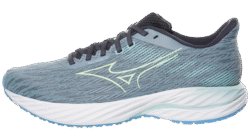Mizuno Neo Vista 2 review
Mizuno Neo Vista 2 Verdict
The pros
- Enough cushioning for a marathon
- Incredibly bouncy, energetic ride
- Durable outsole rubber
- Good outsole traction
- Faster ride than v1
The cons
- $20 more expensive than v1
- Upper feels sloppy
- Unstable
Rating breakdown
Facts / Specs
Size/Fit
Cushioning & ride
Usage
Who should buy the Mizuno Neo Vista 2 ?
If you’re looking for a really energetic, plated trainer with a super soft ride, the Neo Vista 2 is perfect for you.
If you liked the ride of the Neo Vista 1 but you felt its ride was a tad too mushy, the Neo Vista 2 will be a great upgrade.
Who should not buy the Mizuno Neo Vista 2 ?
If you’re a heel striker and you need a lot of stability, the Neo Vista 2 won’t have enough structure or support for you.
If you have very narrow or low volume feet, the upper for the forefoot will be too spacious for you.
Mizuno Neo Vista 2 Introduction


Not many know this but Mizuno, founded in 1906 (the same year as New Balance) is the oldest Asian sports brand. It was founded by 2 brothers, Rihachi and Rizo Mizuno who originally sold only baseball gear.
Today, Mizuno has a diverse performance running range consisting of daily trainers, racers, super trainers and trail shoes. Last year, Mizuno’s running shoe category generated USD 160 million in revenue.
Fun fact: all of Mizuno’s foams and plates are developed 100% by them in their Osaka research lab. This means that Mizuno can tailor foams and plates for the purpose of each shoe, e.g. soft and unstable for racers, plush and stable for trainers.
Most shoe brands license or outsource foam compounds to chemical giants like BASF and Arkema. For example, most PEBA and Pebax midsoles are by these suppliers.
The Neo Vista is Mizuno’s super-stacked, plated trainer designed for all types of runs. When I reviewed the Neo Vista 1 last year, I felt like it was a bit too soft and mushy. It couldn’t pick up the pace and it was only capable of easy & recovery runs. It wasn’t the all-round daily trainer that Mizuno advertised.
The Neo Vista 2 weighs 9.4 oz (266 g), the exact same weight as version 1. It also has the same stack heights. Its price has increased by $20 and it now costs $200.
Mizuno Neo Vista 2 First Impressions

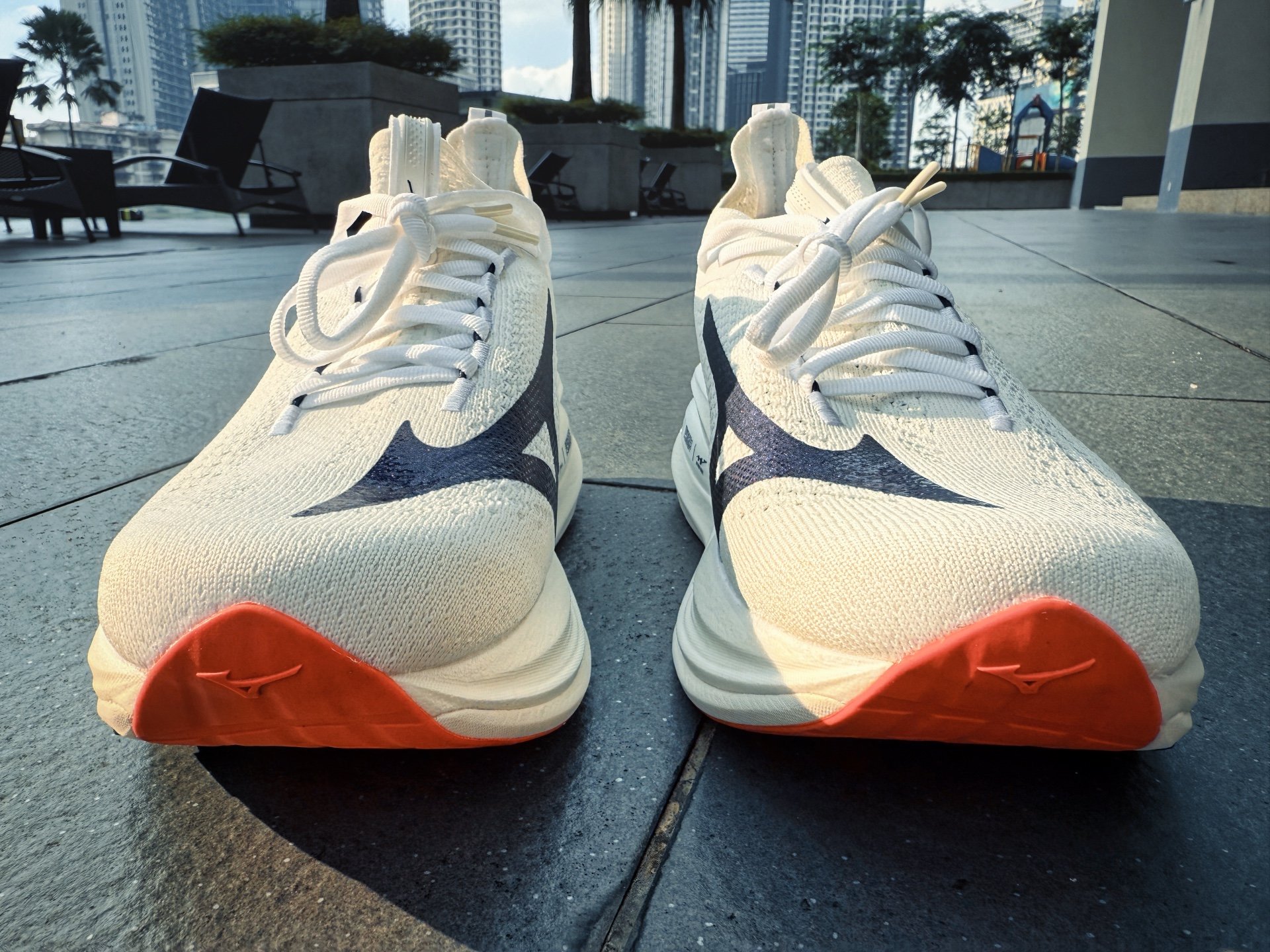
My first run was a 15 kilometre easy run. I could immediately notice a difference in the ride within the first kilometre. The Neo Vista 2 felt like a much taller shoe than its predecessor because of the more resilient midsole foam. It didn’t feel as mushy and it felt a lot more lively.
I was surprised how fast it felt compared to the first version. I was able to pick up the pace effortlessly thanks to the new foam and the nylon plate. I also noticed that it felt a bit unstable at slow paces, especially in the rear of the shoe.
The recent shoe that it reminded me of was the Saucony Endorphin Elite 2. Both shoes felt incredibly bouncy but the Neo Vista 2 felt more controlled and more stable.
Mizuno Neo Vista 2 Upper


I’m not a fan of bootie construction uppers because they don’t provide as good a fit as traditional uppers. The Neo Vista 2’s upper feels too baggy in the forefoot so it feels like my feet are swimming in the shoe. The tongue folds when I’m tying the shoe because there’s so much excess material.
The knit used in this version is thicker and it doesn’t conform to your feet as well as v1. It also feels a bit warm even though there are ventilation holes in the midfoot.
There’s a soft, internal heel counter for support and the heel lockdown is surprisingly good considering you can’t use a runner’s knot due to the bootie construction.
I recommend going true to size even though the forefoot and toe box are too spacious. If you size down, the length will feel too short.
Mizuno Neo Vista 2 Sole Unit


If you’re a fan of soft and bouncy rides like me, the Neo Vista 2 will be right up your alley. It reminds me of the original ASICS Novablast in many ways. Other comparable running shoes include the Nike Invincible Run 1 & 2, and the Endorphin Elite 2, as mentioned above.
The Neo Vista 2 has a dual-density midsole with the new, nitrogen infused, TPE Enerzy NXT on the top and the older, EVA version of Enerzy NXT on the bottom. Sandwiched between the two foams is a flexible nylon plate.
The nylon plate is coated in glass fibre to make it more rigid so unlike the excessively flexible nylon plate in the Saucony Endorphin Speed, the Neo Vista’s nylon plate has more rigidity. This results in snappier toe offs.
The 2 foams in the midsole are perfectly tuned for a new-age training shoe. The upper layer has wild, untamed, explosive properties, while the bottom layer is more subdued and creates a stable platform.


The stack heights are the same as v1 but it feels like a much taller shoe. It now feels like it’s 45 mm in the heel, unlike v1 which felt like it was under 40 mm because it compressed so much.
The Neo Vista 2’s biggest weakness is its instability. If you’re a heavy overpronator or supinator, it will feel too wobbly. I have to slow down when cornering and running on uneven surfaces because of how squishy it is. When my legs are fatigued, I also notice my ankles working hard to stabilise me.
A big reason why the Neo Vista 2 feels so energetic is due to its deep, wide central groove underneath it. This allows the entire midsole to splay when loaded, and then spring back to shape when released. In the second version, there’s a small piece of foam in the midfoot that joins the 2 sides together. This ensures that the midsole doesn’t splay too much, like its predecessor.
The Neo Vista 2 has a wide pace range. It’s soft enough to handle really slow recovery paces above 7 minutes per km (11.15 per m). It’s also energetic enough to handle steady-paces and faster, just below marathon pace 4:30 per km (7:16 per m). I wouldn’t use it for intervals or threshold work because it’s far too squishy.

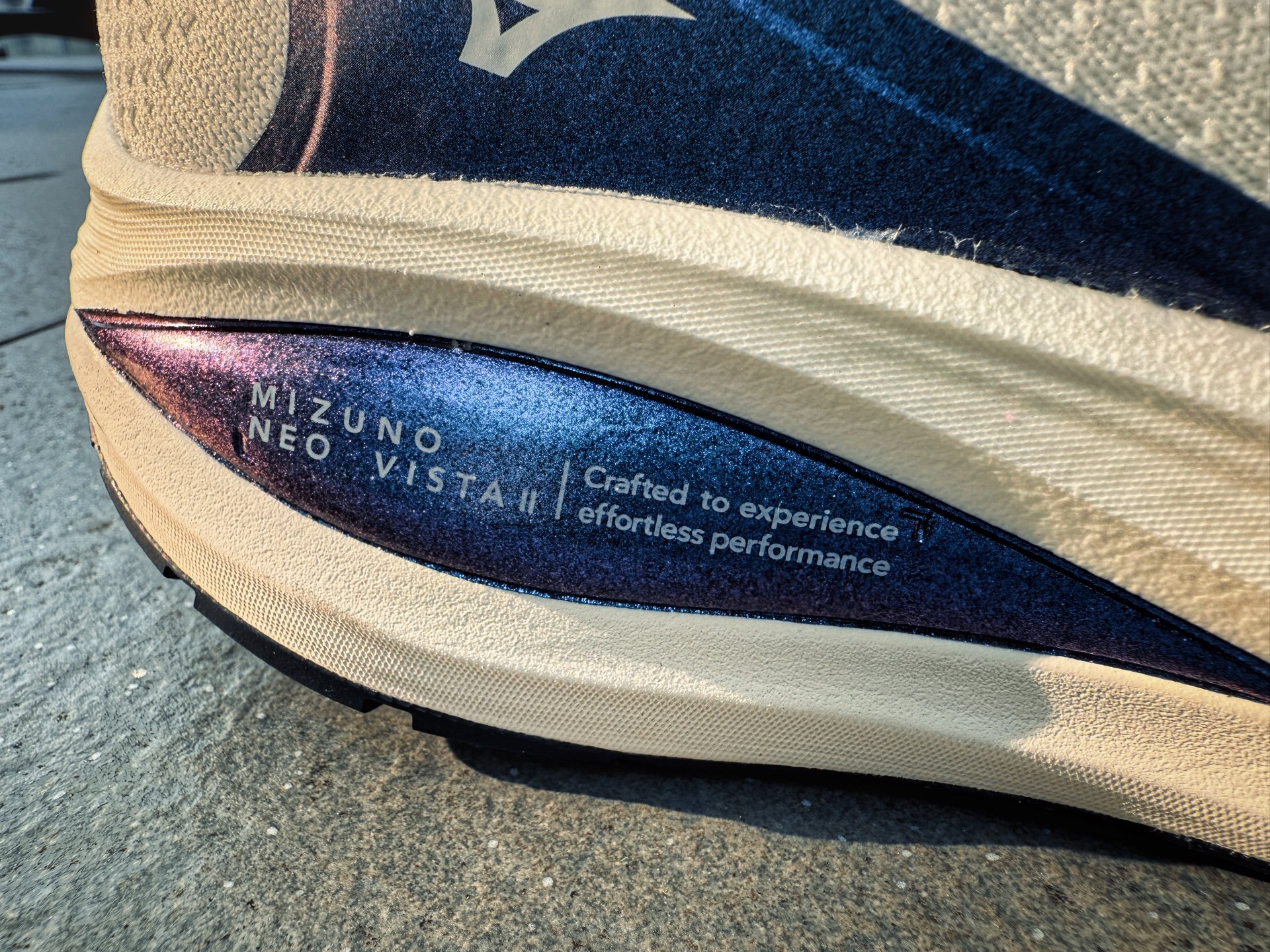
I was able to do a 40 km, steady-paced training run in the Neo Vista 2 and my legs felt so good after the run that I was able to do 34 km the next day. The plate provides enough stability for long distances and it also makes it feel more efficient.
The outsole is almost entirely covered in soft but durable rubber. I’ve done over 130 km in my pair and there’s very little wear on the outsole. There is some noticeable wear on the inner lip of the central groove but it’s not alarming. Traction is good and tacky in wet conditions.
Mizuno Neo Vista 2 Conclusions

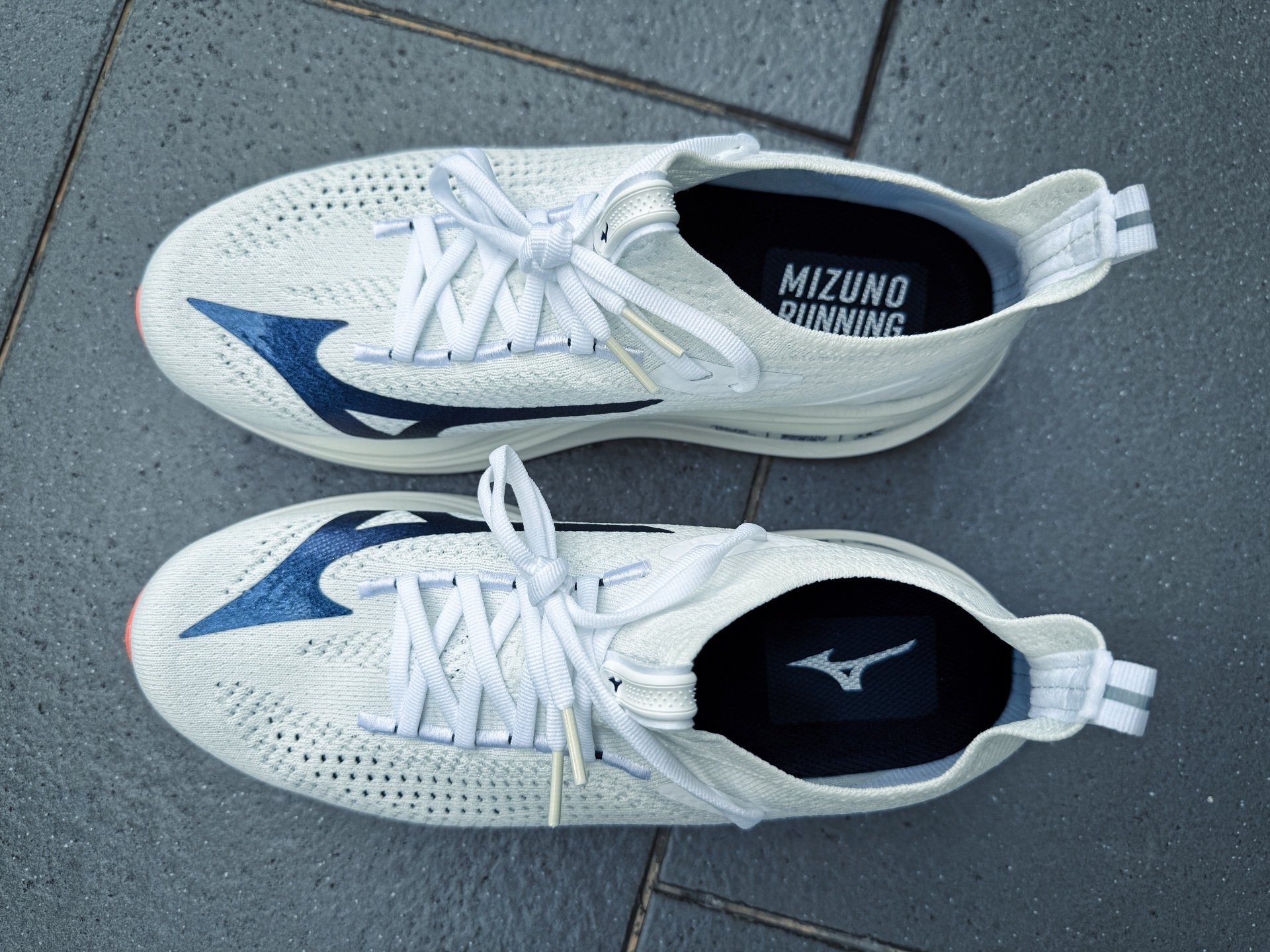
Compared to other super trainers like the Skyward X, Cloudmonster Hyper and Superblast 2, the Neo Vista 2 has the softest ride by far but is also the least stable.
It has the highest level of bounce and is also the most fun to run in.
How does the Neo Vista 2 compare?
Why you can trust us
As editorial policy, we do not accept free samples from companies.We purchased this pair of Mizuno at Running Warehouse with our own money.
This page contains affiliate links. As an Amazon Associate we earn from qualifying purchases. Read more about our policy.
Reviewed by Brandon
Brandon is a South African marathoner based in Malaysia, where the humidity is high and his shoe rotation is even higher. He’s a runner with a full-blown addiction to running shoes. Most people buy shoes to run—Brandon runs to justify buying more shoes. If there’s a new drop, he’s probably already logged 100km in them.
User feedback (0)
Similar shoes to Mizuno Neo Vista 2

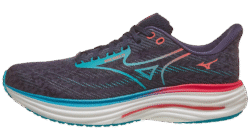
Mizuno Wave Rider 29 Review





















